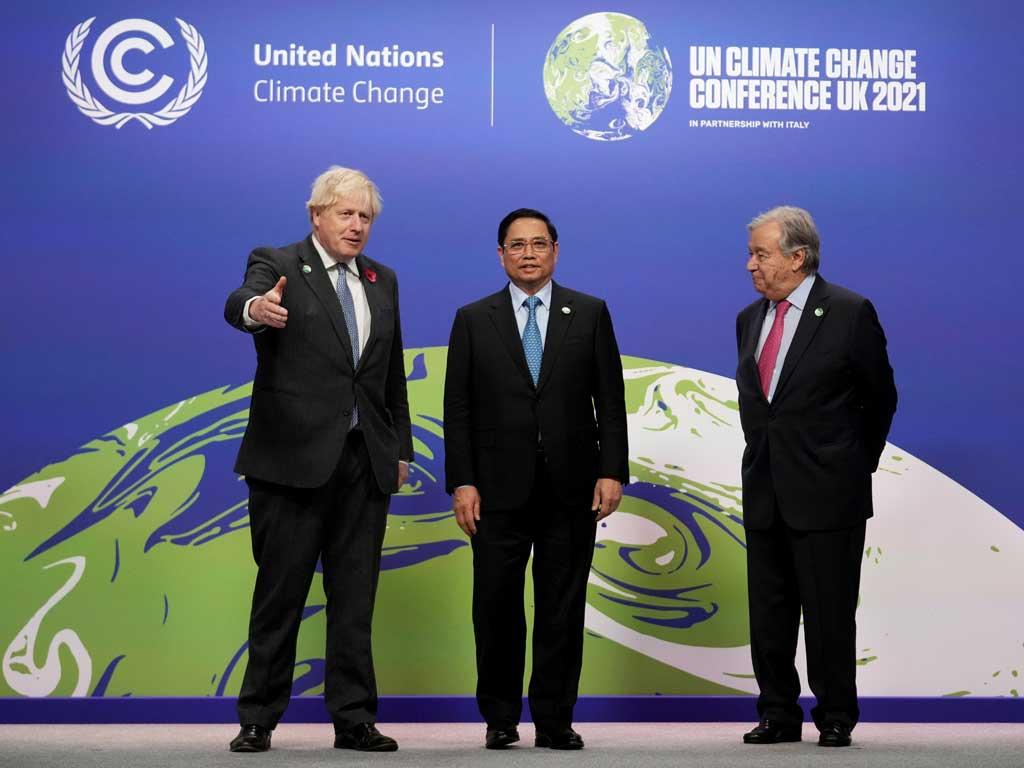Consulting on greenhouse gas inventory – guidance on implementing greenhouse gas emissions reports according to Decree 06/2022/ND-CP.
Global warming and climate change have become key topics in sustainable development. Governments of countries as well as customers (brands, consumers) are increasingly aiming for more stringent requirements on energy efficiency and greenhouse gas (GHG) emissions. Therefore, companies must be able to understand and manage their GHG-related risks to ensure long-term success in a competitive business environment, and to be well prepared to meet regulatory requirements. Brand, country or regional climate policy. At the COP26 Climate Change Summit in Glasgow, Scotland, UK, all 197 countries participating in the United Nations Framework Convention on Climate Change adopted the Climate Treaty. post-Glasgow. The treaty published on the website of the United Nations Framework Convention on Climate Change (UNFCCC) recognizes that the goal of limiting global temperature rise to 1.50C requires a reduction in global greenhouse gas emissions. quickly, in which CO2 emissions must be reduced by 45%, CH4 emissions must be reduced by 30% by 2030 compared to 2010 levels and aim to reach carbon neutrality by 2030 and Netzeo by 2050.

We help your business manage environmental risks and reduce greenhouse gas (GHG) emissions towards Netzro by 2050.
1./ What is a greenhouse gas (GHG) inventory?
Greenhouse gas inventory is the activity of collecting information and data on sources of greenhouse gas emissions, calculating the amount of greenhouse gas emissions and absorption of greenhouse gases within a specified range and in a specific year. according to methods and procedures issued by competent authorities.
2./ Why is it necessary to inventory greenhouse gases (GHGs)?
According to Decree 06/2022/ND-CP regulating Greenhouse Gas Emissions Mitigation and Ozone Layer Protection, Vietnam has about 5000 businesses that need to conduct a greenhouse gas inventory. This field is still quite new in Vietnam. And some frequently asked questions are: “WHAT IS A GREENHOUSE GAS INVENTORY?”, “WHY” and “WHEN” should a Greenhouse Gas Inventory be done?” “How to do it?” is one of the most important questions that the vast majority of businesses often ask in this field.
According to the law: On January 18, 2022, Deputy Prime Minister Le Van Thanh just signed Decision No. 01/2022/QD-TTg promulgating a list of fields and establishments that emit greenhouse gases that must comply greenhouse gas inventory.
Accordingly, there are six sectors that must conduct greenhouse gas inventories including: energy, transportation, construction, industrial processes, agriculture-forestry and land use and waste. That is:
Establishments that emit greenhouse gases must conduct a greenhouse gas inventory if they have an annual greenhouse gas emission of 3,000 tons of CO2 equivalent or more or fall into one of the following cases:
a) Thermal power plants and industrial production facilities with total annual energy consumption of 1,000 tons of oil equivalent (TOE) or more;
b) Freight transport companies with total annual fuel consumption of 1,000 TOE or more;
c) Commercial buildings with total annual energy consumption of 1,000 TOE or more;
d) Solid waste treatment facilities with annual operating capacity of 65,000 tons or more.
List of facilities that must carry out greenhouse gas inventory can be found in Appendix II-III-IV-V according to Decision 01/2022/QD-TTg at the following link:https://thuvienphapluat.vn/van-ban/Tai-nguyen-Moi-truong/Quyet-dinh-01-2022-QD-TTg-co-so-phat-thai-khi-nha-kinh-phai-thuc-hien-kiem-ke-khi-nha-kinh-501161.aspx
3. Benefits of greenhouse gas inventory
Understand the environmental situation:
From inventorying and assessing environmental emissions, you have a comprehensive view of the level of compliance with environmental regulations and shortcomings that need improvement.
Comply with environmental regulations:
Having accurate information on environmental emissions and the ability to advise from a team of experts helps you meet regulatory requirements and reduce the risk of violations.
Accuracy and reliability:
This service ensures accuracy and reliability in the GHG emissions inventory process. With the support of our team of experienced experts, you can trust the results and information provided.
Looking for improvements:
Based on the inventory results, the team of experts will advise and propose improvement measures to minimize GHG emissions, increase resource use efficiency and improve environmental compliance.
Detailed reports and useful documents:
The service provides detailed reports on inventory and assessment results as an important database for internal and external reports, providing useful information for analysis and tracking progress on results.
4./ Greenhouse gas inventory process
Step 1: Data collection
Collect data on greenhouse gas emitting activities within an organization or company. This data includes greenhouse gas emissions from different sources such as energy consumption, production and transportation.
Step 2: Determine the inventory scope
Determine inventory scope. This includes identifying the greenhouse gases that need to be inventoried, their sources, and the time range over which you want to inventory.
Step 3: Calculate
Measure and calculate greenhouse gas emissions from identified sources. This may include the use of modern measuring devices or calculation tools based on collected data.
Step 4: Analysis and assessment
After having measurement and calculation data, you will analyze and evaluate the impact of the greenhouse gases that have been inventoried. This helps you better understand the sources, trends and impacts of greenhouse gases within your organization.
Step 5: Mitigation measures
Based on the results of analysis and assessment, propose measures to minimize the impact of greenhouse gases. These measures may include the use of renewable energy, improving production efficiency and adopting green technology.
* With this service, we send a team of experts to your facility to conduct an inventory and assess environmental emissions. This accurate and detailed inventory process helps businesses have a clear view of the current environmental status and find appropriate improvements and management measures. Our team of experienced experts ensures accuracy and reliability in every step of the inventory process.


 Bài viết hot:
Bài viết hot: 









